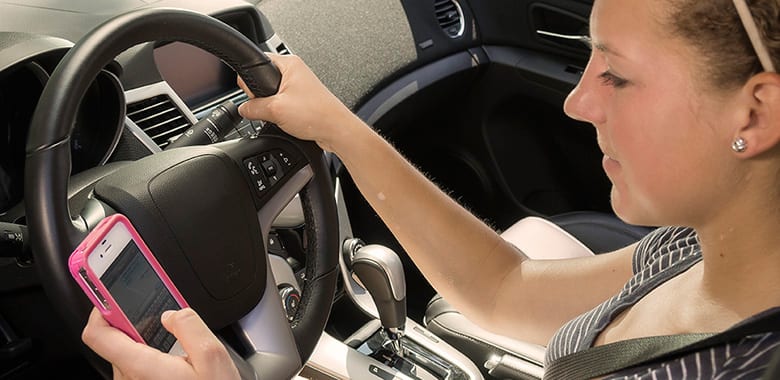COVID-19 Restrictions Ease as ‘100 Deadliest Days’ Begin

Audio By Carbonatix

Courtesy of AAA
New AAA data examines fatal teen crash rates during the summer from 2008 to 2018
Submitted by AAA West Hartford
The period between Memorial Day and Labor Day has come to be known as the “100 Deadliest Days” because there is a sharp increase in the number of fatal crashes involving teen drivers. But this year there is concern that, because of COVID-19, the risk could be even greater.
The combination of schools closed, activities curtailed, summer jobs canceled, and restrictions being lifted could mean that young, inexperienced drivers are spending even more time behind the wheel – putting everyone else at greater risk.
More often than not, the victim of teen driver-involved fatal crashes is not the teen driver, but a passenger, someone in another vehicle, a pedestrian or a cyclist so this is an issue that impacts us all.
Even before the 100 Deadliest Days began, fatal crashes across the state were up more than 35% this year as compared to last year – despite there being far fewer drivers on the roads. State police cite speeding as a significant contributing factor.
The quarantine has been difficult for parents and teens but it is critical that our young drivers continue to abide by Connecticut’s Graduated Driver Licensing laws. We have already seen the tragic consequences of not doing so.
100 Deadliest Days
Nationwide, more than 8,300 people died in teen-related summertime crashes from 2008 to 2018. That’s more than seven people a day each summer as compared to the rest of the year (six people/day).
In Connecticut, 59 people were killed in crashes involving teen drivers in the past ten years during the “100 Deadliest Days,” the period between Memorial Day and Labor Day. In fact, on average, more than a third of all fatal crashes involving teen drivers occur in the summer months.
Due to their inexperience, teen drivers are at a higher risk of crashes.
According to the new AAA Foundation Traffic Safety Culture Index, about 72% of teen drivers aged 16-18 admitted to having engaged in at least one of the following risky behaviors in the past 30 days:
- Driving 10 mph over the speed limit on a residential street (47%)
- Driving 15 mph over the speed limit on a freeway (40%)
- Texting (35%)
- Red-light running (32%)
- Aggressive driving (31%)
- Drowsy driving (25%)
- Driving without a seatbelt (17%)
“Parents remain the best line of defense to keep everyone safe behind the wheel,” says Amy Parmenter, spokesperson for AAA in Greater Hartford, which is headquartered in West Hartford. “It’s never too soon to educate teens on the dangers of distracted driving, speeding, and the impairing effects of alcohol and marijuana. But we can’t just tell teens about the dangers. We must also refrain from engaging in risky driving behaviors and ensure we are modeling good behavior.”
To keep roads safer this summer, AAA encourages parents to:
- Talk with teens early and often about abstaining from dangerous behavior behind the wheel, such as speeding, impairment and distracted driving.
- Teach by example, and minimize risky behavior when driving.
- Establish a parent-teen driving agreement that sets family rules for teen drivers.
- Conduct at least 50 hours of supervised practice driving with their teen.
To support parents in conducting practice driving sessions during COVID-19 and beyond, AAA is providing a free four-page guide to help parents coach their teens on how to drive safely.
The “Coaching Your New Driver – An In-Car Guide for Parents” AAA ParentCoachingGuide 2020 offers behind-the-wheel lesson plans, including a variety of “DOs and DON’Ts” to make the learning experience as helpful as possible. For parents, the guide can be beneficial as they coach their teens on a variety of routes, building on their formal behind-the-wheel training.
TeenDriving.AAA.com has a variety of tools to help prepare parents and teens for the dangerous summer driving season. The online AAA StartSmart Parent Session also offers excellent resources for parents on how to become effective in-car coaches as well as advice on how to manage their teen’s overall driving privileges. Teens preparing for the responsibility of driving should enroll in a driver education program that teaches how to avoid driver distraction and other safety skills.
About AAA Foundation for Traffic Safety:
Established in 1947 by AAA, the AAA Foundation for Traffic Safety is a not-for-profit, publicly funded, 501(c)(3) charitable research and educational organization. The AAA Foundation’s mission is to prevent traffic deaths and injuries by researching their causes and by educating the public about strategies to prevent crashes and reduce injuries when they do occur. This research is used to develop educational materials for drivers, pedestrians, bicyclists and other road users. Visit www.AAAFoundation.org.
Like what you see here? Click here to subscribe to We-Ha’s newsletter so you’ll always be in the know about what’s happening in West Hartford! Click the blue button below to become a supporter of We-Ha.com and our efforts to continue producing quality journalism.



